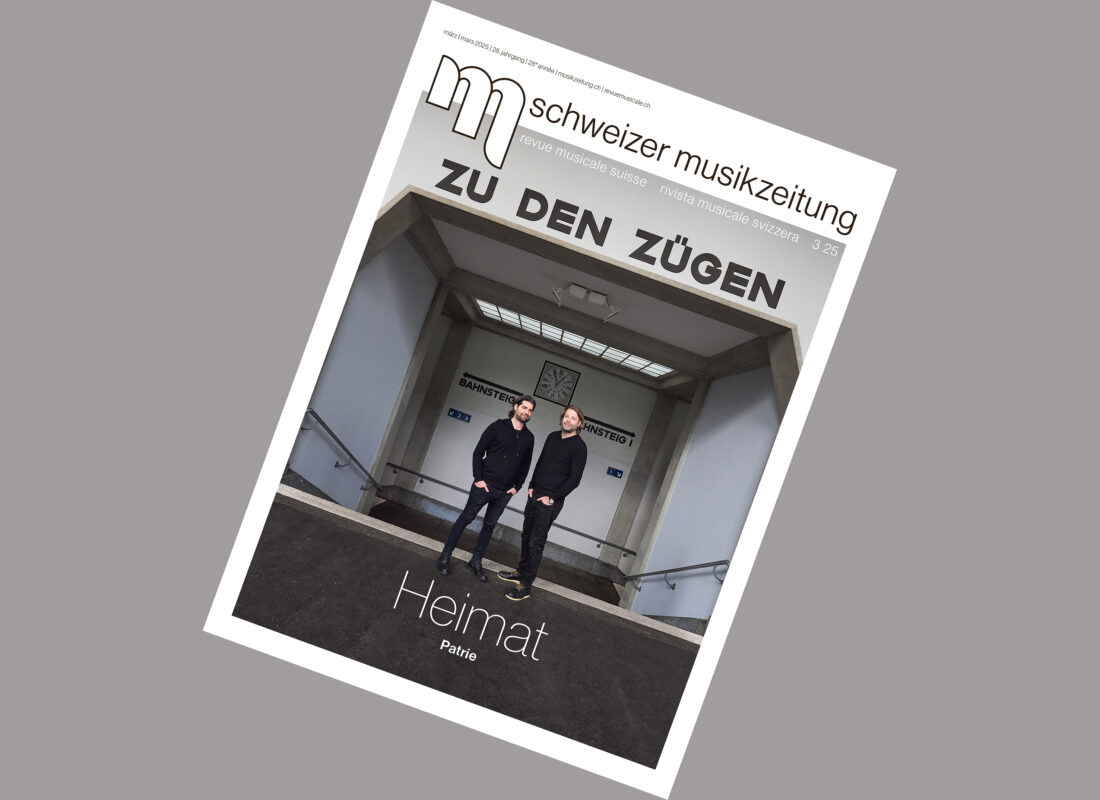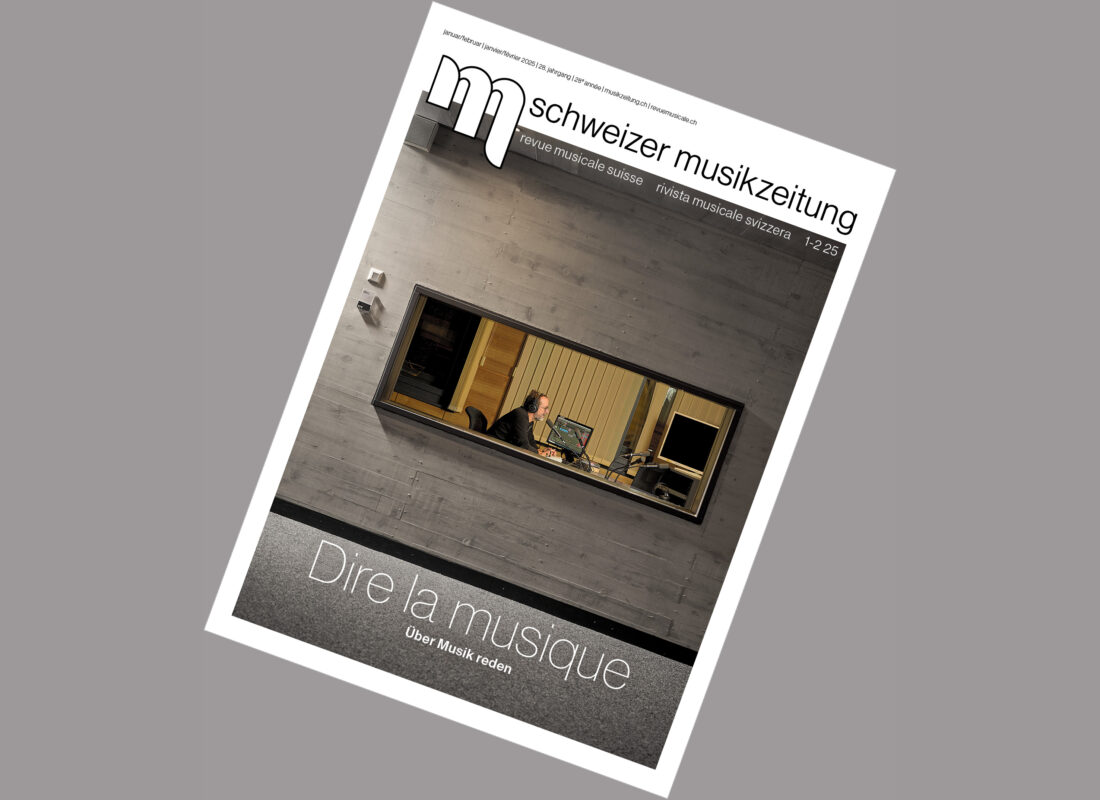The destruction of silence
Silence is an important topos in the history of 20th century music. Composers often sought expressive moments precisely in the quiet tones. The music of noise, on the other hand, is said to be violent and pure noise. Can these two spheres be combined?
Silence is an important topos in the history of 20th century music. Composers often sought expressive moments precisely in the quiet tones. The music of noise, on the other hand, is said to be violent and pure noise. Can these two spheres be combined?
Laptop noise, birdsong, an off-screen jigsaw, the city humming its drone from afar. Doors slamming in the courtyard, children's voices, the rattling of a moped exhaust, airplanes that will land on Tegel airfield in a few moments. The average backdrop of a city in 2014, in the morning, in a quiet Berlin side street. The construction work is omnipresent. The noise produced by the grinding, sawing and drilling machines is part of my environment. Work goes on non-stop here, if not on the street, then in the house. An everyday backdrop, my silence. The quiet stillness that is and has always been described as spiritual in the history of music (especially that of the 20th century) and beyond - it doesn't exist, it probably never has.
I encounter a different listening situation on a February evening at Berghain in Berlin. The club, which techno fans from all over the world flock to every weekend, was playing noise music that evening: Pressure on the ears, assault on the body. Concentrated listening is hardly possible. Instead, my body is "involuntarily" attacked by the sounds, walled up. Gradually, after what felt like 20 minutes, the ear got used to the masses of noise and differences began to quietly emerge on the auricle: shredded MP3 remnants, feedback loops, sounding data garbage.
This noise, the almost unbearable din, is actually the supposed counterpart to the rather romanticized "silence" described at the beginning. The often-used phrase of the Wall Of Soundthat is what for once is appropriately attributed here in terms of sound. Yasunao Tone is the composer, sound artist and performer of this music and probably one of its most important representatives in noise circles. As with other of his Fluxus contemporaries, the Japanese composer's field of activity is diverse; he has worked with Merce Cunningham and John Zorn, among others. In the 1980s, however, Tone devoted himself primarily to the manipulation and preparation of CDs and has since created his music from the maltreatment of digital, binary codes. This aesthetic and sonority of the glitch is exemplified above all in his piece Solo for Wounded CDTone sticks strips of tape on the side of the CD to be read by the laser so that the CD player plays back the binary data "incorrectly".
But what does the music of the noise musician Tone have to do with silence? One might think that silence and noise are two irreconcilable poles, with music situated somewhere in between: as an organized structure consisting of sound and silence. However, these fixed points are no longer considered normative and rigid, as music has proven many times in the 20th century: Noise was emancipated and silence was used for compositions and concepts. However, the fact that even this dualism, as proposed here, does not necessarily work, but is softened as a figure, is demonstrated by the music of Tone and, more broadly, Noise.
In addition, noise as a musical genre should not be labeled exclusively with the attributes of violence and noise. Because - and here there are certainly similarities with what we call silence - noise also always addresses the perception of sounds and music, indeed noise can even be heard contemplatively. This can be seen in pieces by the Polish composer Zbigniew Karkowski. The composition White can be found on a Zeitkratzer CD with the title Noise ... [Noise]; the subtitle: "To Listen To At An Extremely Loud Level". Despite the overwhelming volume and density of the sound events, a piece of music like this leaves the listener a free space and the possibility of orientation in the sound events. Similar to listening to the landscape, one can speak here of listening into the density of sound. In the listening modes of Noise, at least the possibility of a gentle contact between these different poles is revealed. For both phenomena - silence and noise - have an inherent idea of sonic material that can be experienced sensually and physically.
However, the fact that Yasunao Tone is not concerned with similarities to the phenomenon of silence is most explicitly demonstrated by the composition Imperfection Theorem of Silence in which silence is thematized directly. For this, he uses "soundless" pauses from his piece Wounded Soutai Man'yo BOOK III and processes this supposedly silent material into a new composition. The result is a short piece that is rather quiet in comparison, but nevertheless interspersed with noise and interference. Silence is thus reinterpreted as the sounding material of a noise piece. There is nothing to be said against listening to this music contemplatively and thus incorporating modes of perception of silence. More important than this perception, however, is the de-romanticization of silence, which in the history of music over the last hundred years has taken on an almost mythical quality; Nono, Cage and Pärt come to mind. Noise deconstructs the idea of silence as contemplation, of silence as more natural retreat and demythicizes it. Noise as a negation of communication and communicability deliberately produces errors, is intended to be flawed and thus celebrates the disruption of calm and digital smoothness and the disruption of the romanticism of silence, which is always fictitious anyway. The music of Noise thus also reflects our sonic environment.








